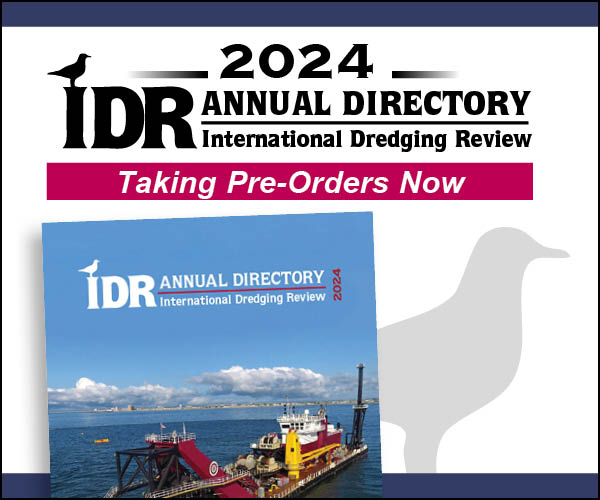IADC PRESENTS WEBINAR ON ECOSYSTEMS SERVICES
.jpg|!|)
Ecosystem Services concepts were applied at the Polders of Kruibeke in Belgium. Part of the polder has been converted into a tidal marsh by the creation of a Flood Control Area with the recreational asset of a wetlands as birding area and alder brook forest.
A webinar on “Ecosystem Services” was presented free of charge on November 16 by Dr. Annelies Boerema of the University of Antwerp Belgium under the auspices of the International Association of Dredging Companies (IADC). This is one of several webinars organized by the IADC over the last few years. For those who missed the live presentation the Ecosystem Services webinar (and the others as well) can be seen online.
Dr. Boerema addressed the issue “How do we utilize the Ecosystem Services concept for more integrated marine infrastructure project assessments?” The focus was on how to take the concept of Ecosystem Services (ES) and apply it to assessing the value of marine infrastructure projects such as new container terminals mega beach nourishments and the construction of flood control areas. The webinar ran approximately 45 minutes with a Q&A session at the end.
ES are the ‘services’ that our ecosystem affords us: flood protection blue carbon water quality regulation recreational facilities aspects that make a dredging project appealing to a broader base of stakeholders.
The concept is much debated by scientists and researchers across the globe. The theoretical importance of the ES concept has gained good recognition but the concept still needs to be applied in practice. To prove the concept’s value and its practical use a group of scientists from the University of Antwerp applied it to real-life projects. The dredging industry is one of the first industries to recognize the benefits of the ecosystem services approach in project evaluation and assessment.
An ES evaluation enables an integrated and balanced comparison of the impact of human actions on project alternatives by attributing a monetary value to the social and environmental aspects of a project. The monetary valuation of the economic plusses of an expanded port or a replenished beach or an improved wetland can be weighed against the positives and negatives that the project will have on the quality of life of stakeholders. In this way ES makes a full environmental cost-benefit analysis comparing the investment costs with environ-mental and socio-economic benefits. This will help to assess whether one human action has more or less effects on the ecosystem different stakeholders and society in general.
The ES approach also facilitates scenario analyses. Different project locations and different project designs or project execution methods have different impacts on the provided ecosystem services. An ES assessment can help facilitate an objective evaluation of the impacts which provides a good support in the decision-making process on where and to what extent impacts might be compensated or mitigated. One cannot depend on only the ES evaluation in these kinds of decisions but it provides a tool to have a discussion based on facts and figures. This will definitely increase the support among stakeholders and a better decision-making process regarding a project.
Dr. Annelies Boerema is a post-doctoral researcher at the Research Group Ecosystem Management at the University of Antwerp Belgium. She obtained her Master’s degree in business engineering and a Master’s degree and Doctoral degree in environmental science at the University of Antwerp.
The webinar on Ecosystem Services is available free of charge at http://bit.ly/2gftCJw. The IADC webinars appear at regular intervals and cover a wide variety of subjects pertinent to the maritime industry. All are available free of charge at the IADC website (https://www.iadc-dredging.com/269/seminars-presentations-and-webinars/webinars/).



